
Venue: Rasseland (Aoi-Umi-Koen)
Approximately 10 each of children’s nebutas and large nebutas, a total of approximately 25 nebutas *Children’s nebutas are small-sized nebutas created by local council members and children’s associations.
Approximately 20 large nebutas *Award-winning nebutas will be paraded on August 6.
Approximately 15 children’s nebutas and large nebutas
Venue/Aomori Port (from Tsutsumi Wharf to Hakkodamaru) *The nebutas will be placed on boats and ferried around Aomori Bay.
The festival will take place in the center of Aomori City.
It is a 10-minute walk from JR Aomori Station,
30 minutes by car from Aomori Airport,
and 15 minutes by car from Aomori Chuo IC.
The route is approximately 3.1 kilometers long. Visitors will be able to see the nebutas from the pedestrian walk as the nebutas are paraded down the car lanes.
Aomori Nebuta Festival is said to have originated as a variant of the Tanabata Festival, though the authenticity of the story is uncertain.
The Tanabata Festival from China and Tsugaru’s customs and traditional events are said to have united, and when paper, bamboo and candles became commonly available, they are said to have turned into lanterns and eventually into nebutas.
Traditionally nebutas have been created by local councils and paraded every year.
They have been getting larger and more detailed.

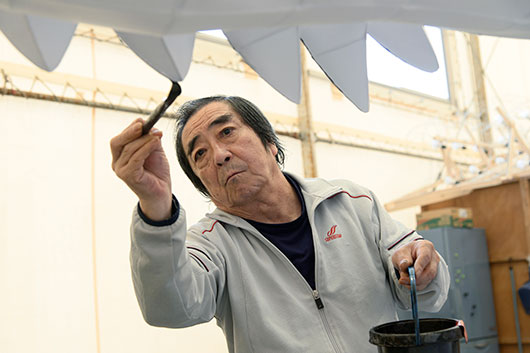
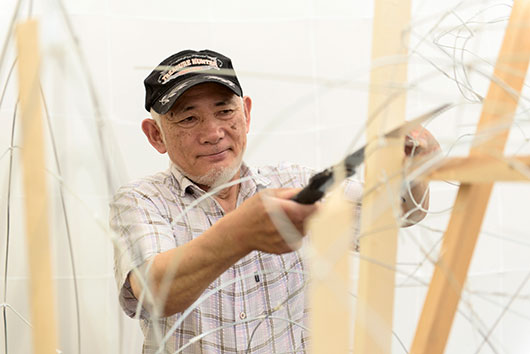
The creators of large nebutas are called Nebutashi, or nebuta masters.
They are the specialists who decide the basic design, the entire structure and colors of nebutas.
Every year after the Nebuta Festival, the masters start planning the next year’s nebutas, completing the first draft of design during the winter.
Detailed parts like the face, arms and legs are created first, and by May, the entire structure is built in studios with wood and wires.
Light bulbs are then put inside, and the wire structure is covered on the inside with traditional Japanese paper.
Once the paper is pasted to the entire structure, outlines are drawn in black charcoal ink, patterns are drawn with melted candles, and finally colored with paintbrushes and sprays to complete the nebuta.
Nebuta bayashi, or nebuta music bands, consists of drums, flutes and hand cymbals. The drummers set the rhythm, the flute plays the melody, and the cymbals accentuate the music.
The haneto dancers dance and bounce to this music.
Dancers in the Nebuta Festival are known as hanetos. They dance and bounce down the street with the nebutas, as people cheer “Rassera, Rassera.”
Anyone can join the dance as long as they wear a haneto costume, which is part of the festival’s appeal.
Hanetos can just walk in and start dancing. No need to book in advance or on the day of the event.
You can wear an official haneto costume and join any nebuta group of your choice from the starting point.
Haneto costumes can be purchased at department stores in Aomori City, and elsewhere. Some stores rent and help you put on the costume.
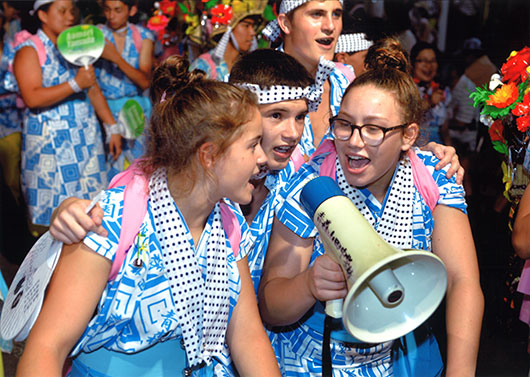
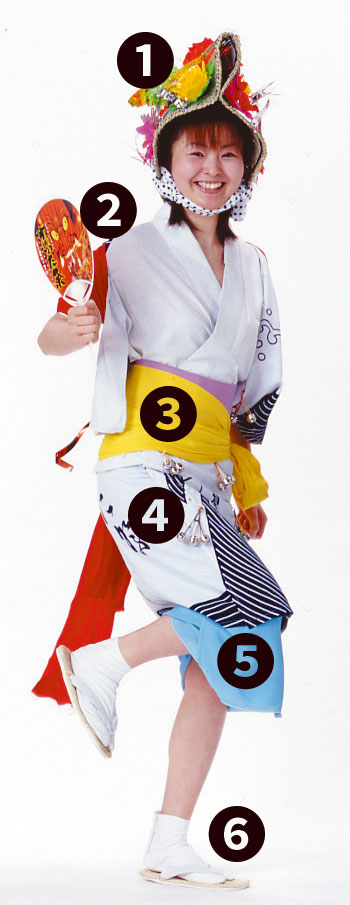
There are paid seats along the route. Visitors are welcome to watch the procession from other spots, but they are usually crowded.
Please purchase paid seats in advance. If there are vacancies they will be available for purchase on the day of the event.
If it rains the festival will still go ahead, with nebutas being covered with large vinyl sheets.
Please wear a raincoat in rain and refrain from using an umbrella as it obstructs the view of other visitors.